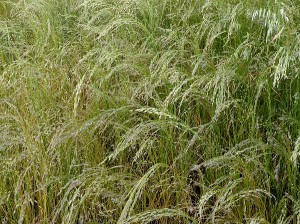 I have a friend who has a dream to travel by jeep from Scotland all the way down to the Great Karoo at the tip of Africa.
I have a friend who has a dream to travel by jeep from Scotland all the way down to the Great Karoo at the tip of Africa.
An ambitious travel plan for sure, but I have full confidence she will make it happen since they both bicycled through Europe, the Middle East and India, then flew into Asia where they continued their pedaling into Thailand, the country with the most aromatic, delicious foods (in my opinion).
I love this friend who always gets me thinking the impossible travel dreams and finding them not so impossible after all, until the question of cuisine grumbles deeply within my stomach.
Africa is a continent that is the second largest landmass on Earth and home to hundreds of different cultural and ethnic groups with a vast variety of culinary choices.
One of Africa’s countries provides a grain called teff that many people in this country are unaware already stocks the shelves in certain food markets. It is high in protein holding a solid set of eight essential amino acids with especially high levels of lysine, carbohydrates, fiber, and twice the iron and three times the calcium of other grains (the same amount found in a half-cup of cooked spinach).
It’s estimated that 20 to 40 percent of the carbohydrates in teff are resistant starches, a newly-discovered type of dietary fiber that according to the Whole Grains Council (wholegrainscouncil.org) can benefit blood-sugar management, weight control and colon health.
According to the Academy of Nutrition and Dietetics, these starches escape digestion in the small intestine to make it into the large intestines where they become fermented and, in turn, aid in a range of health benefits from reducing diarrhea symptoms to increasing uptake of calcium.
This tiny whole grain, a seed really, has been a staple of traditional Ethiopian cooking for thousands of years. Ethiopians eat it every day in their traditional spongy sourdough flatbread Injera, as porridge, and even brew it into an alcoholic drink.
Many of Ethiopia’s famed long-distance runners attribute their energy and health to teff. The grain itself is the smallest in the world, so small it is impossible to remove the germ and bran which is perfect because it leaves the nutritional value intact. To get an idea how small, it takes about 100 grains of teff to match the size of one kernel of wheat. Although it does contain some gluten, it doesn’t contain the a-gliadin protein fraction that causes a reaction in those with celiac disease.
Significant levels of other minerals such as phosphorus, potassium, magnesium, barium, zinc and thiamin help round out teff’s nutritional value. Highly versatile, teff has a mild, sweet, molasses-type flavor and adds nicely to stews and baked goods.
It comes in white, brown or red, but the most valued is the white variety with its sweeter taste, while the red variety is slightly higher in iron.
Take the flour of this exotic seed and mix it into brownies, pancakes, cookies or scones to boost nutritional content.
Cooked, the grains themselves can be a side dish in place of rice for a pilaf, or mixed with onions, garlic and herbs to make yummy veggie patties.
Cooking is easy with ½ cup of teff to two cups of water in a pot with salt to taste, bring to boil then simmer for 20 minutes. Like quinoa, let it stand for a few minutes before serving.
The cooked teff also makes a tasty hot breakfast cereal similar in texture and thickness to wheat farina but with a nuttier taste.
Contact Gina at Ima_gina_tion@yahoo.com.




